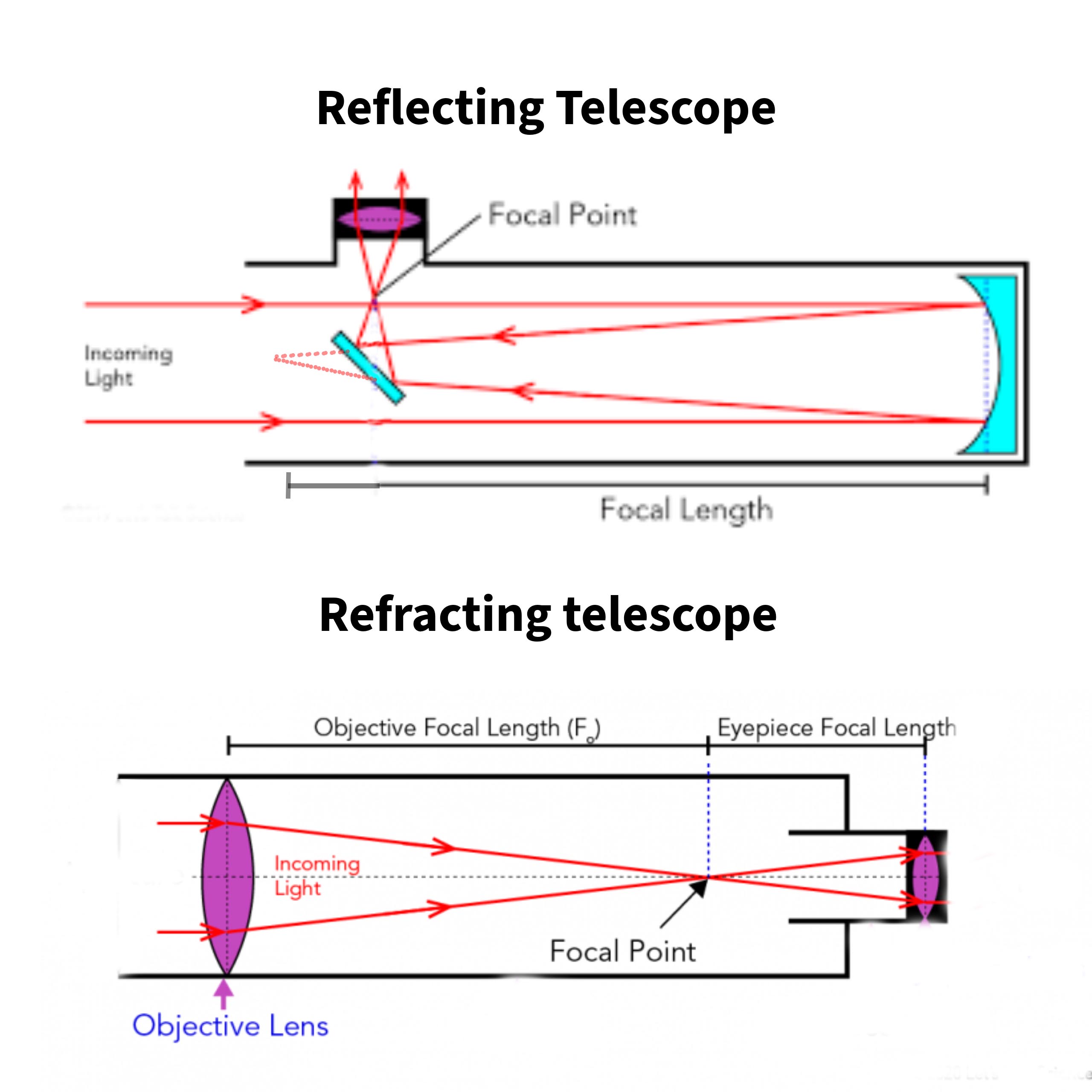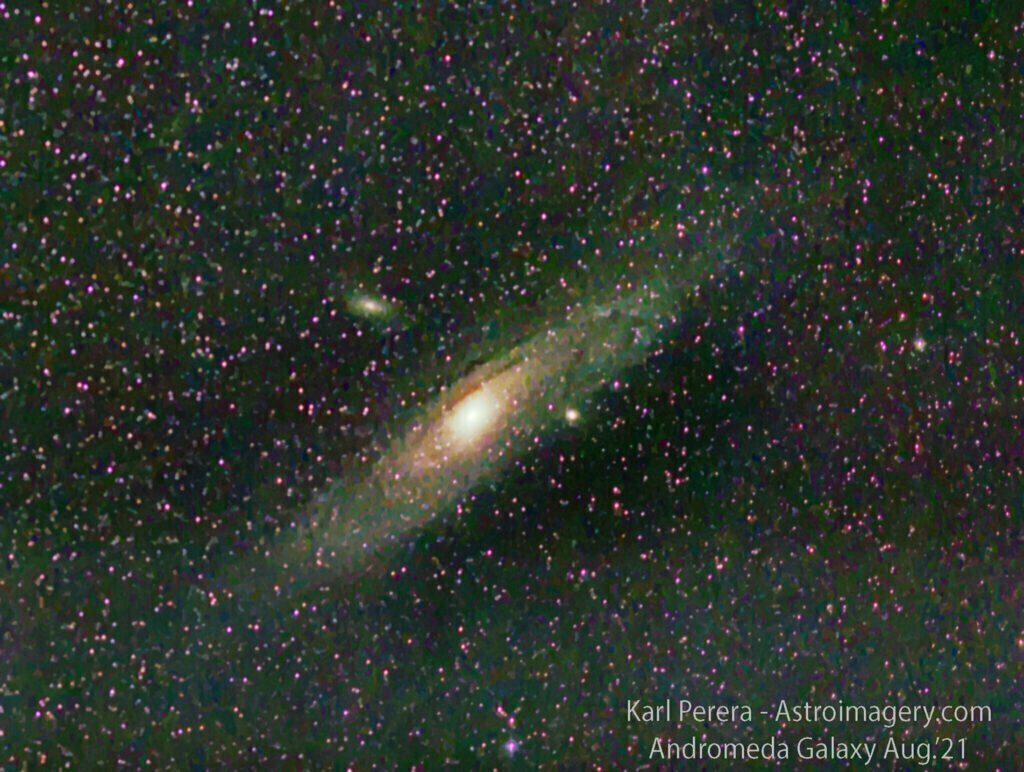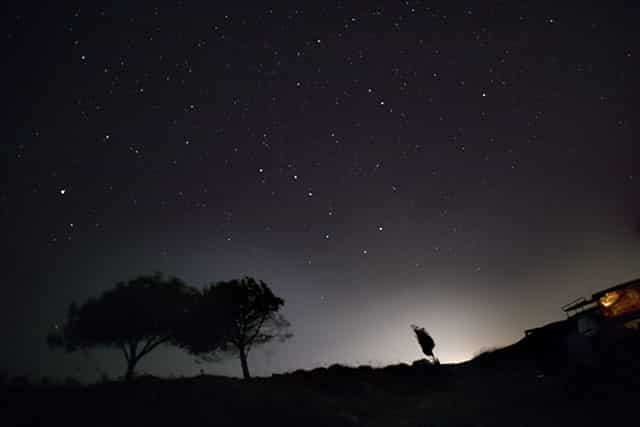Table of Contents
Selecting the best focal length for deep-space astrophotography targets can have a profound effect on the quality of your images and the level of detail you capture. With so many options available, it may be difficult to know which one to pick. In this article, I’ll provide some tips and tricks for selecting an optimal focal length when photographing deep-sky objects.
Before anything else, it is essential to comprehend what focal length is and how it impacts your images.
What is focal length?
Focal length is a term often used in photography. Your focal length in astrophotography will be determined by the equipment you are using. The camera lens or telescope combination will result in an overall focal length.
Focal length refers to the distance between the point where light converges in a lens and the camera sensor; shorter focal lengths offer a wider field of view, while longer ones magnify the image and give you a narrower scope.
Let’s take a look at this image to understand this better:

For a camera and telescope setup the focal length is the distance between the point where light converges in the telescope optical tube and the camera sensor. This camera could be either a DSLR or a dedicated astronomy camera. Neither should be used with a lens. This is called prime focus. Because there is no camera lens only the telescope optics will affect the focal length.
Check the following image:

In the refractor telescope, the light follows a straight path between the objective lens and the focal point. However, in a reflecting telescope there is a secondary mirror that changes the direction of the light coming from the primary mirror by 90 degrees. This directs the light up the focusing tube to the eyepiece.
In the image, you can see that I have drawn where the focal point would be if the secondary mirror were not there. This is to make it easier to understand how long the focal length is. Now, with the secondary mirror, the focal point is up towards the focusing tube.
When using a telescope with an eyepiece for observing, the focuser is used to move the eyepiece to the correct distance from the focal point. Each eyepiece will be different as it will have its unique focal length.
How does Focal Length Affect Your Astrophotography Images?
When doing astrophotography, we use a camera without a lens, in other words, in prime focus. This means the camera sensor must be placed in the right position at the focal point of the telescope for it to be correctly focused. The focal length determines exactly where this point is.
The focal length of a telescope can affect your image in a number of ways including:
- a longer focal length magnifies objects so you can see or photograph smaller objects such as many galaxies.
- a shorter focal length allows you to see or photograph larger objects because it increases your field of view.
- a shorter focal length has less magnification which is no problem when you are looking at larger objects.
I have tried to capture objects like the ring Nebula or some of the smaller galaxies and planetary nebula but cannot get enough detail with my telescope at 650mm focal length. In fact when I zoom in and crop my image I am not happy at all with the results because all I get is blurry undetailed images. I either need to use a Barlow lens which can double the focal length and magnification or use a different telescope.
For deep sky astrophotography, aim for a focal length that provides enough magnification to capture all relevant details of your target without losing too much sky beyond it.

The problem with this is that for deep-sky astrophotography, there are targets of varying sizes. From small galaxies that are tiny because they are so far away to the enormous Andromeda galaxy and from large nebulae such as the North American Nebula to medium-sized objects, we cannot limit ourselves to one focal length. One thing I have done, though, is work out what I can do with the focal length I have (650mm) and how to photograph smaller or larger objects. More about this below.
There is a direct proportional relationship between focal length and magnification, such that if you double the focal length, the magnification also doubles. For more information on the mathematics behind this, see this explanation.
Probably the most important reason why the focal length is important for astrophotography is because it changes the field of view. This means that your astrophotography image will capture more or less of the sky and the target you are photographing.
Using a Variety of Focal Lengths
I have overcome the problem of the need for different focal lengths by having two alternative setups that will enable me to change the focal length according to the target I want to capture.
So what is the best focal length for deep-space astrophotography? The answer depends on the kind of target you normally want to photograph and then your focal length to give you the widest possible choice.
I have my telescope and camera (ZWO ASI533 MC PRO), which are 650mm, and the camera has a square sensor, which is fairly small. Alternatively, for more wide-field shots, I can use a DSLR camera plus different astrophotography lenses. Currently, the lenses I have are 17mm, 24mm, 50mm, 85mm, and 135mm. I could actually do with an astrophotography lens of about 300mm to make the range more comprehensive.
Deep Space Astrophotography Lens Guide
Let’s look at some choices of lenses that will be good for deep space astrophotography. These will cover different focal lengths and enable you to capture the maximum amount of light in the shortest amount of time.
Lenses with focal lengths of 17–50 mm are great for Milky Way astrophotography.
As you can see in the photo I took above of the Big Dipper, using a DSLR camera and 50mm lens enables wide-field shots of constellations, including landscapes. The result can be quite stunning!
It depends on what kind of picture you want, but when I am taking photos of deep-sky objects with my DSLR camera, the best astrophotography lens I have is my Samyang 135mm. This is a very popular camera lens, and many recommend it for deep-sky astrophotography with DSLR cameras.

So what makes a good astrophotography lens? It should have a low f-number so it lets more light into the aperture. The ideal would be an F3 or less. The second thing a good astrophotography lens would have is an accurate focus adjustment, which will maintain its focus for long periods of time.
I have tried some lenses with the focal length I wanted for deep sky astrophotography, but the focus could not be set accurately, and I even had to tape the focus because it moved too easily and lost focus over time. It needs to lock into place or not move.
Thirdly, a good astrophotography lens should have good-quality optics that do not distort the stars. Some lenses I’ve tried put a pink halo around the stars or give strange shapes to the stars. We don’t want this.
The kit lenses you get with many models of DSLR cameras may have the focal length you want, but they may not be good quality for one or more of the reasons we have given above. I tried using a 75-300mm Canon lens and despite the great range of focal lengths, the stars were terrible quality with haloes. The focus was so poor that I needed to use tape to fix the lens in position for a night’s imaging. Better to spend the money on the best lens you can afford!
Find out much more about choosing a lens for astrophotography here.
This is a perfect astrophotography lens for those wide-field shots.
The other lenses are good for larger deep sky astrophotography targets such as the Pleiades, the North American Nebula, or Andromeda. The telescope takes care of the rest. If I get more money to spend in the future, I will also consider something in the 1500–2000 mm range to capture smaller objects such as smaller nebulae, galaxies, and planetary nebulae.
The best focal length for deep space astrophotography, especially for deep sky objects is between 800mm and 1200mm. This range allows you to capture detail within the object while still including enough background sky to provide context. Ultimately, however, the ideal focal length depends on which object you are observing or photographing.
For instance, when observing large objects like the Andromeda Galaxy or Pleiades Cluster, a shorter focal length, such as 500 mm, may be ideal to capture all of them. I would even say, from my experience, that 300–400 mm would frame it even better. When I tried to image the galaxy with my telescope, most of the galaxy was out of the frame, and this doesn’t do the object justice!
On the other hand, when observing smaller nebulae and planets, using a longer astrophotography lens like 1500mm will allow you to get more detail. The Ring Nebula is one example where a longer focal length would be appropriate. With my setup of 650mm focal length, it is just so very small. Zooming in is not a good solution because that reveals a lack of clarity and resolution when the image is magnified.
In my astrophotography setup, my telescope and camera combination have an approximately 650mm focal length, which is pretty good for most of the targets I have tried to image. It was not possible to capture some targets in one go, so I did several panels using a technique called mosaic. I found this was a good technique for the Christmas Tree Nebula and the California Nebula, for example, because the 650mm focal length was too much to get the whole of the nebula into one frame.
Comparing the Best Focal Length for Deep Space Astrophotography Targets
| Object | Focal Length (mm) |
|---|---|
| Andromeda Galaxy | 300-500 |
| Orion Nebula | 300-500 |
| Pleiades Cluster | 50-150 |
| Ring Nebula | 800-1200 |
| Whirlpool Galaxy | 800-1200 |
| Rosette Nebula | 400-600 |
| Lagoon Nebula | 300-500 |
| Eagle Nebula | 400-600 |
| Triangulum Galaxy | 800-1200 |
| Veil Nebula | 300-500 |
The above figures are only rough estimates, and in practice, you may prefer to experiment. I have imaged the Pleiades at 150mm and found them to be very small. I would like to capture it at about 400 mm, which I think would be perfect. In my telescope at 650mm, it just fits, but some of the stars are cut out of the frame, and it would have been nice to include them, although they are beyond the blue nebulosity of the star cluster.
Here’s a telescope great for astrophotography:
When selecting the best focal length for deep-space astrophotography, another factor to consider is your camera’s sensor size. With full-frame cameras, longer lenses are possible without sacrificing image quality; on the other hand, crop sensor cameras may require you to use shorter focal lengths in order to not lose too much detail from each shot.
Finally, the best focal length for deep space astrophotography depends on several factors, including the object you are observing or photographing, your camera sensor size, and your personal preferences. Experiment with different focal lengths to find which works best for you, and don’t be afraid to try something new; with practice and patience, you’ll be able to capture stunning images of our universe.
Hopefully, now you’ll understand the importance of focal length in the composition of your astrophotos. I wish you clear skies and good fortune in your astrophotography! If you have any questions for me, I’d be glad to receive them. Just ask me a question here.
More Information
Here is a nice video that explains which focal lengths you need to use for different kinds of astrophotos.








